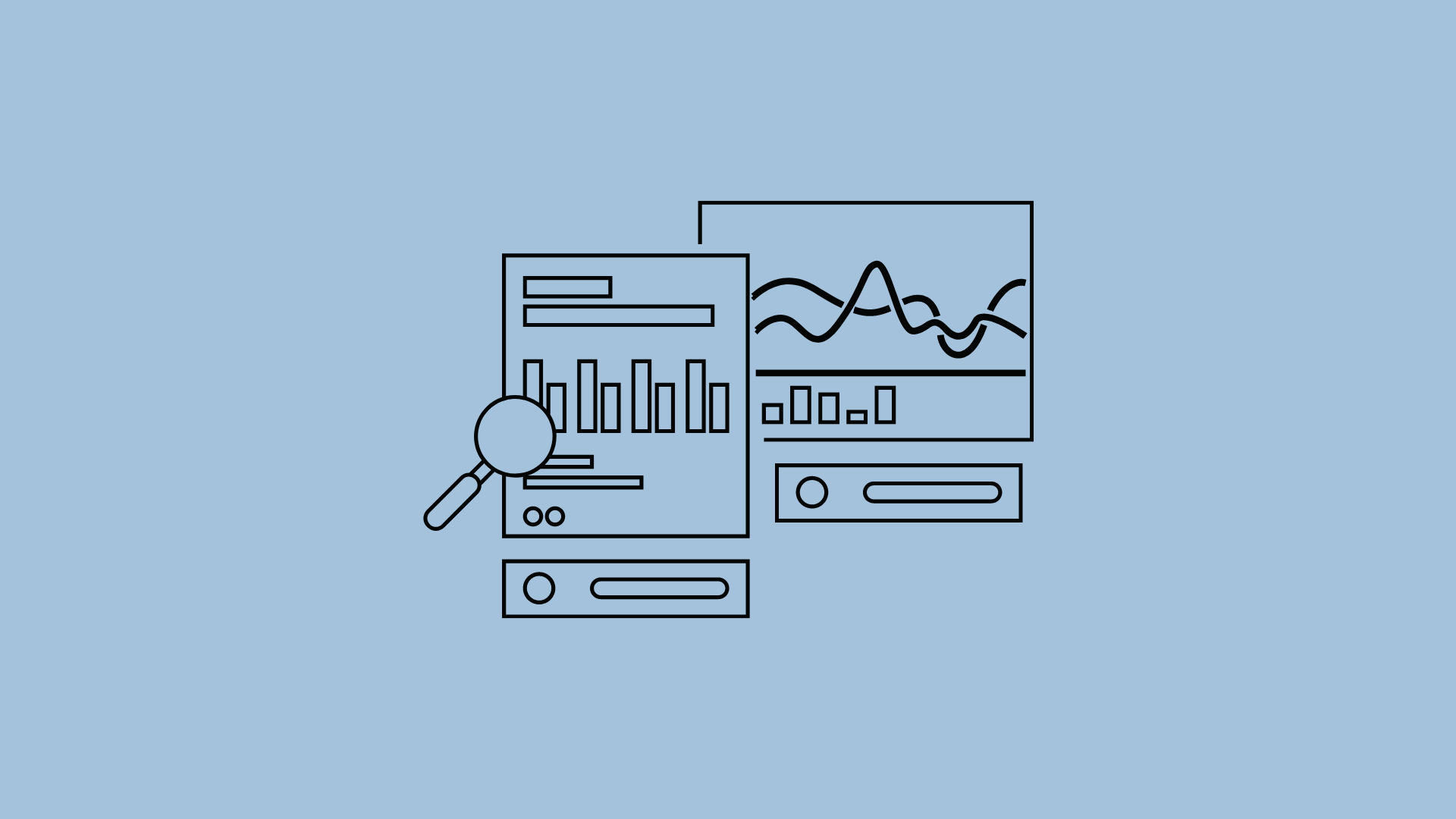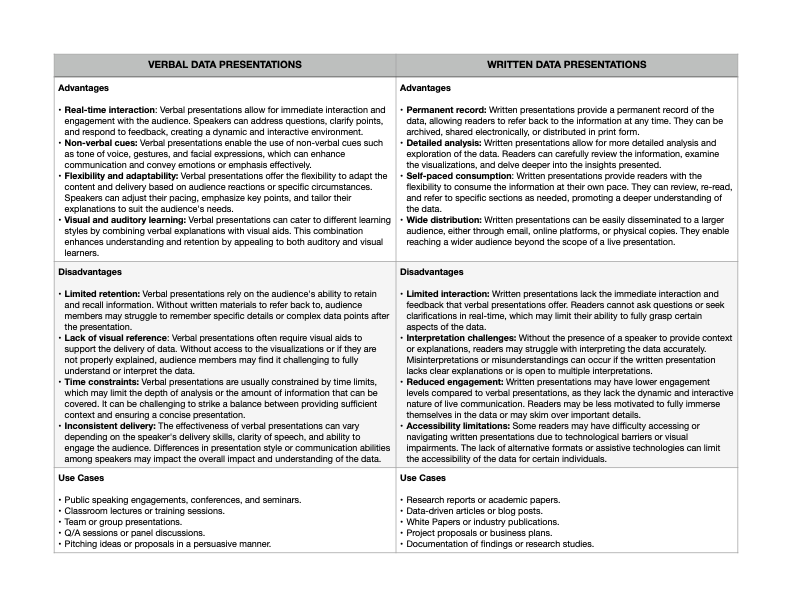Types of Data Presentation
Data presentation refers to the process of organizing and displaying data in a clear and understandable manner. It focuses on effectively conveying information, insights, and key findings derived from the data in a concise and meaningful way. It may involve using text, visuals, and other elements to provide context, summarize data, and communicate the main points to the audience.
Data presentations can take various forms, including verbal and written formats. Here's a breakdown of the two –
Verbal Data Presentation
Verbal data presentations involve delivering information and insights orally, typically in the form of a speech, presentation, or discussion. This can be done in person, through video conferencing, or via recorded audio. Verbal presentations often involve accompanying visual aids, such as slides or multimedia elements, to support the delivery of the data. Verbal presentations allow for real-time interaction, the opportunity to address audience questions, and the flexibility to adapt the presentation based on audience feedback.
Written Data Presentation
Written data presentations involve conveying information and insights through written documents, reports, articles, or other written formats. These presentations are typically static and can be shared electronically or in print. Written presentations rely heavily on text, but they may also include visual elements, such as charts, graphs, tables, or infographics, to enhance data representation and understanding. Written presentations offer the advantage of being easily distributable and referenceable, allowing readers to review the information at their own pace.
Both verbal and written data presentations have their own advantages and are suitable for different contexts. Verbal presentations are effective for engaging the audience, facilitating discussions, and delivering real-time explanations. On the other hand, written presentations provide a more permanent record of the data, allow for careful review and analysis, and can be easily shared with a wider audience.
Here’s a breakdown of the advantages, disadvantages and use case of each data presentation format –


